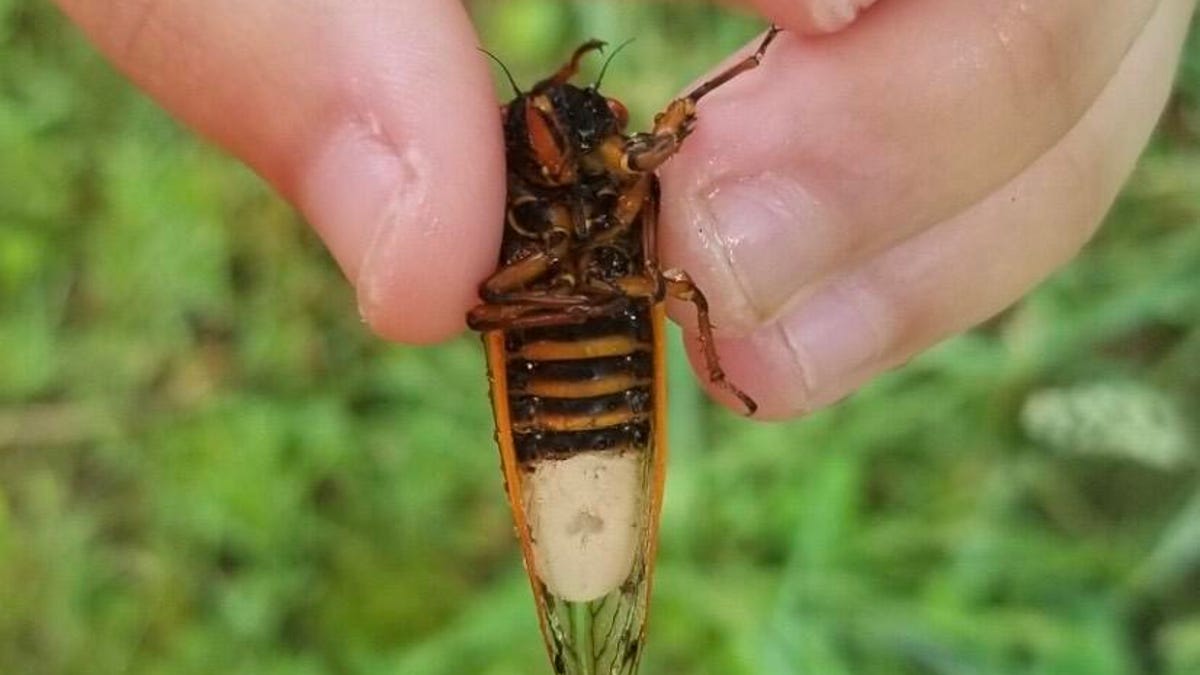Cicadas face bizarre 'death-zombie fungus' that eats away at their butts
The Massospora fungus controls their minds and forces them to infect their fellow insects by mating like crazy.

Massospora, a parasitic fungus, manipulates male cicadas into flicking their wings like females to infect unsuspecting male cicadas.
The much-awaited cicadas of Brood X are now emerging across the eastern US for a massive mating frenzy 17 years in the making. To succeed in procreating, they'll need to avoid getting devoured by animals, but some may also have to battle a bizarre parasitic fungus that controls their minds and forces them to mate like mad to infect their fellow insects.
The fungus Massospora has chemicals like the ones found in hallucinogenic mushrooms, according to a study by researchers from West Virginia University published in PLOS Pathogens in 2020.
The way Massospora fungus spores attack cicadas sounds like something straight out of a horror film. The spores start to infect the bugs before they emerge from underground and eat away at the cicada's rear, abdomen and even its genitals. The spores deposit even more fungal spores for the cicada to transmit to other cicadas like an STD.
The cicadas body parts "wear away like an eraser on a pencil," study co-author Brian Lovett said in a statement. If that's not horrifying enough, cicada expert John Lill of George Washington University described Massospora as a "death-zombie fungus" in the Evansville Courier & Press last week.
Here's a closer look at the Massospora–cicada infection cycle.
The National Parks Service lists Massospora, along with birds, racoons, opossums, frogs and other animals, as a common predator of Brood X cicadas.
The WVU study focused on the unusual sexual behavior of the infected cicadas. While infected cicadas can no longer successfully mate because their backsides are taken over by the fungus, the insects still try to get it on, which then transmits the fungus to healthy cicadas.
The study explained that the sneaky fungus manipulates male cicadas to move their wings so that they imitate females' mating signals.
"Essentially, the cicadas are luring others into becoming infected because their healthy counterparts are interested in mating," Lovett said. "The bioactive compounds may manipulate the insect to stay awake and continue to transmit the pathogen for longer."
"If one of our limbs were taken out or if our stomach was slashed open, we would probably be incapacitated," study co-author Matthew Kasson told CNN. "But infected cicadas, despite the fact that a third of their body has fallen off, continue to go about their activities like mating and flying as if nothing happened. This is really, really unique for insect-killing fungi."
Other fungus parasites also control their insect hosts as if they were zombies. "Zombie ant fungus" (Ophiocordyceps unilateralis) is a parasite mostly found in tropical forests. It grows inside the ant's body until it eventually pierces through the ant's head and releases fungal spores to infect more ants.
Cicadas may not be alone in the animal kingdom when it comes to nature's version of The Walking Dead, but at least Brood X is expected to emerge in massive enough numbers to insure its survival as a group. As the NPS says, "There are more cicadas than all the combined predators can eat."



